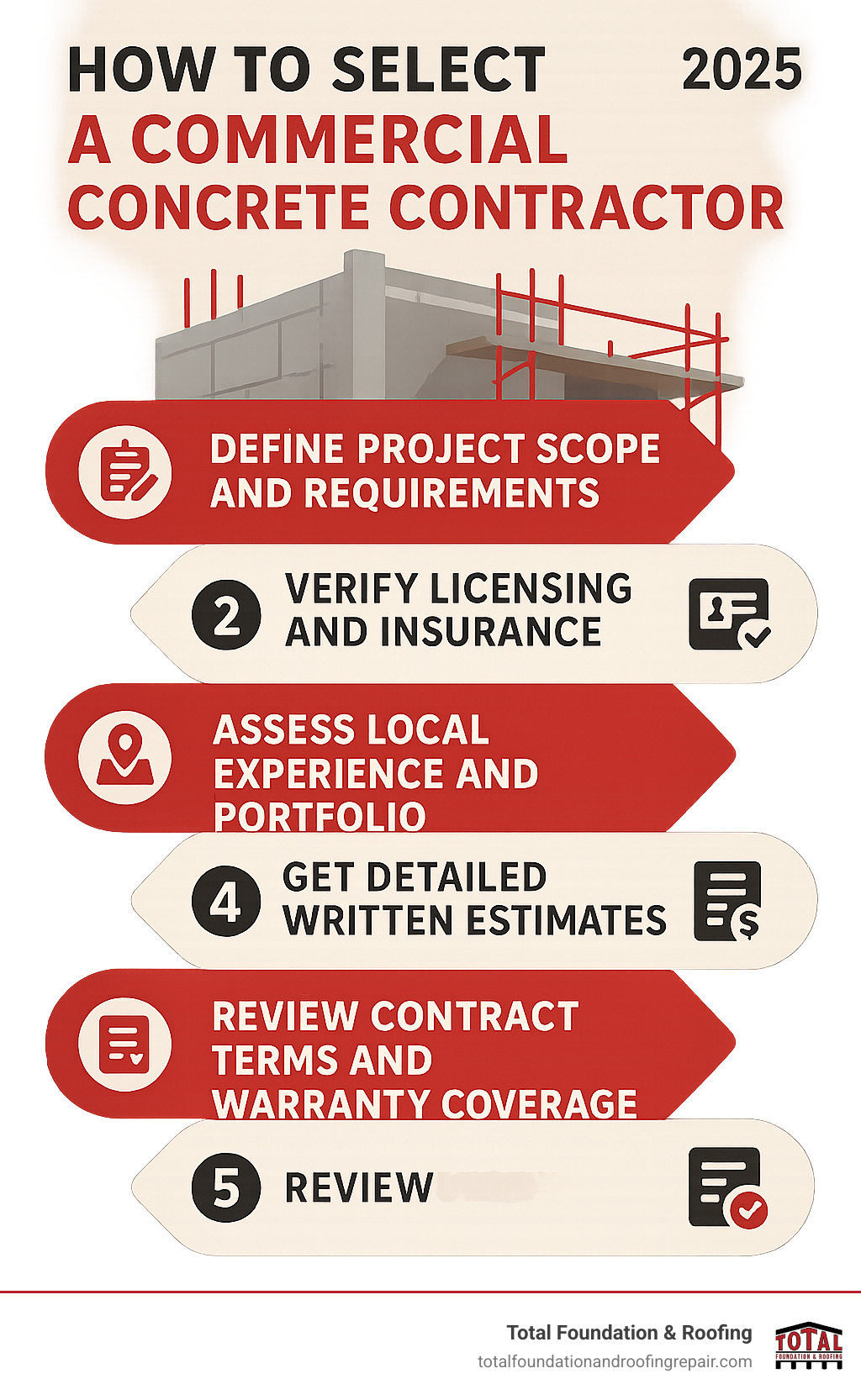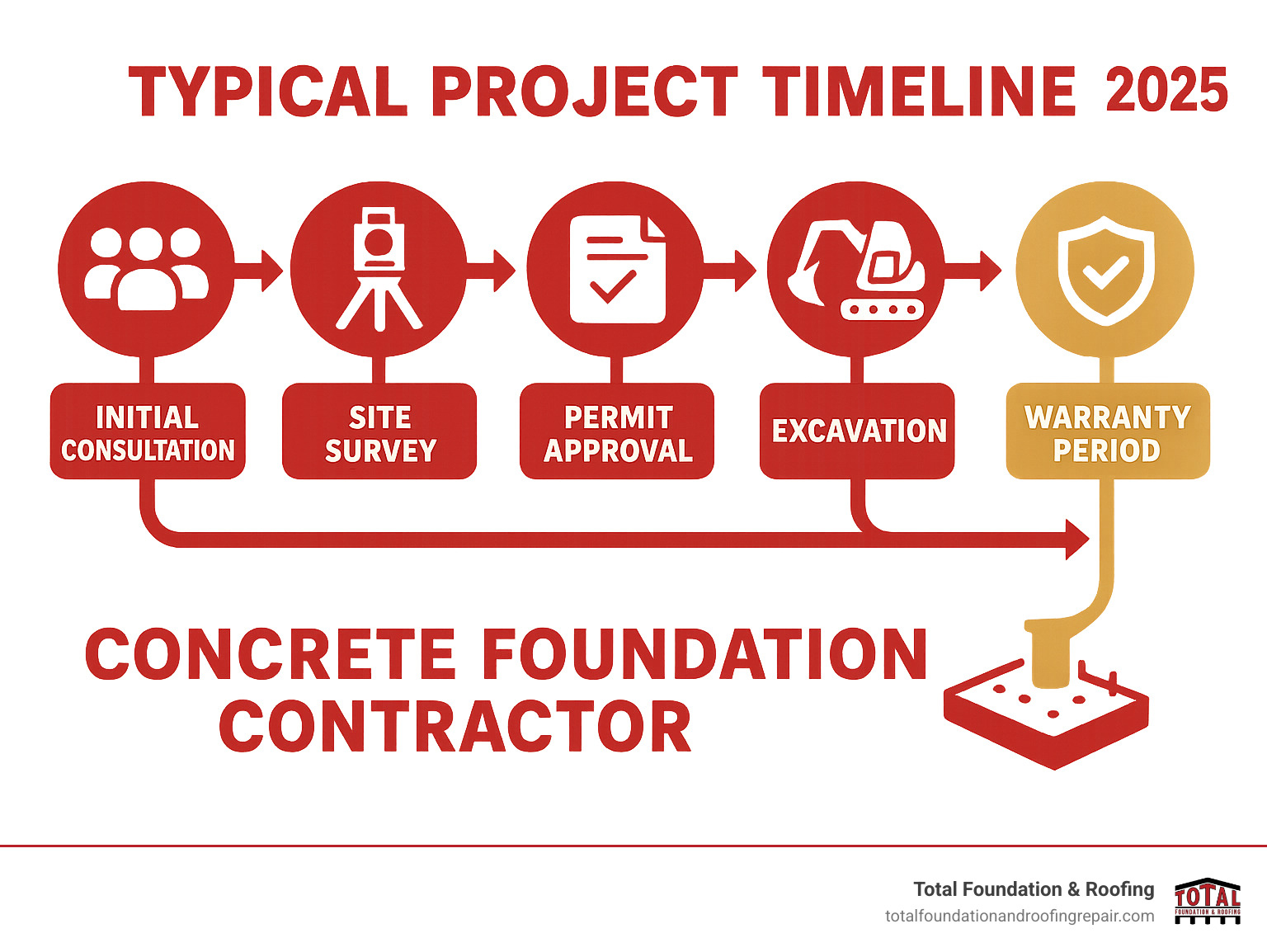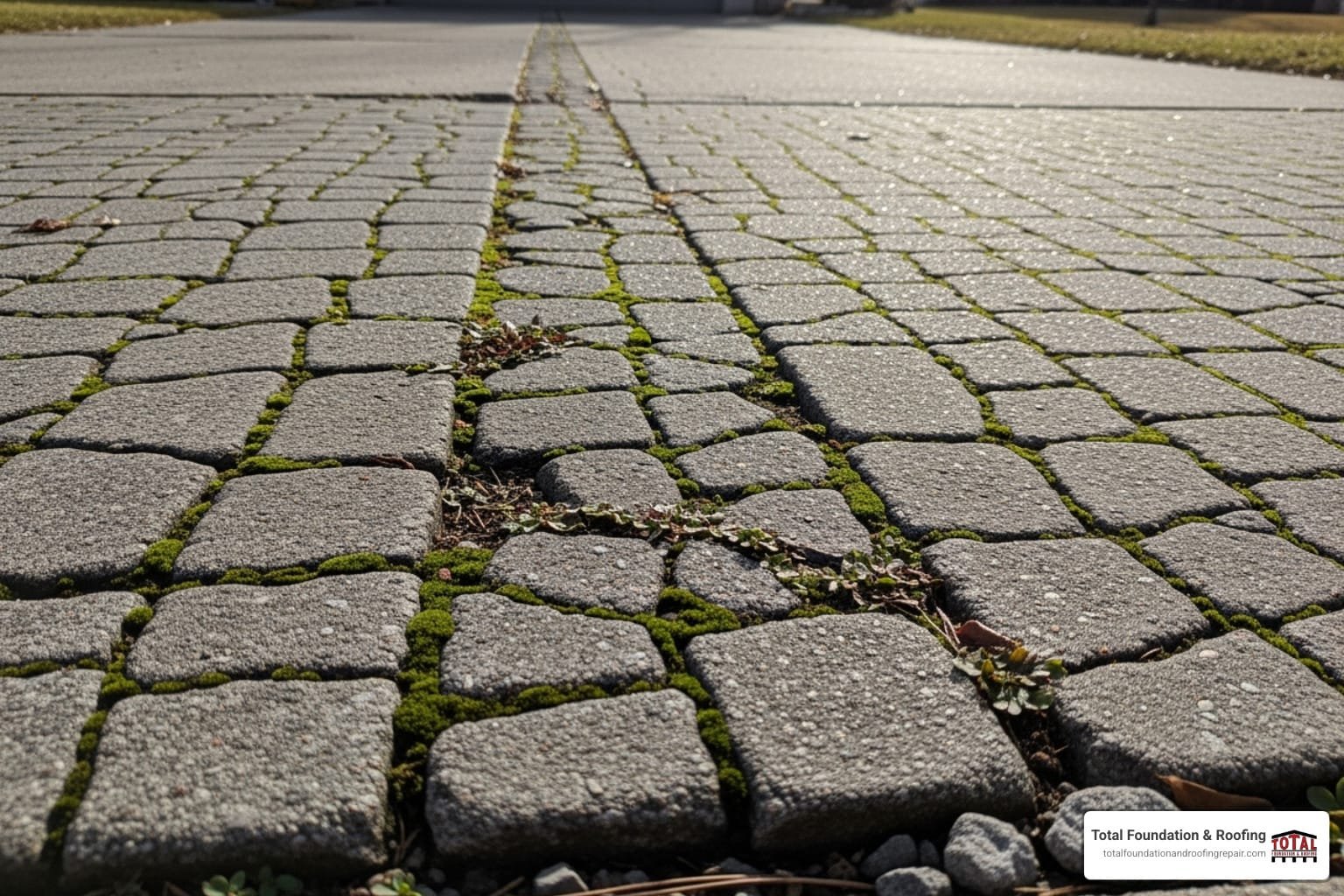Table of Contents
ToggleWhy Your Commercial Project Needs the Right Foundation Partner
A concrete foundation contractor is a specialized professional who constructs, repairs, and maintains concrete foundations for commercial buildings. These contractors handle everything from site preparation and concrete pouring to waterproofing and structural repairs, ensuring your building has a solid base that will last for decades.
What a Commercial Concrete Foundation Contractor Does:
- New Construction: Excavation, formwork, rebar placement, and concrete pouring
- Foundation Repair: Crack repair, underpinning, and structural reinforcement
- Waterproofing: Moisture protection and drainage solutions
- Specialized Services: Retaining walls, sump pump installation, and site preparation
The foundation is literally the bedrock of any commercial construction project. In Texas, where expansive clay soils can shift dramatically with weather changes, choosing the wrong contractor can lead to catastrophic structural problems, costly repairs, and dangerous safety hazards. A flawed foundation doesn’t just threaten your building – it threatens your entire investment.
For commercial property owners in the Texas Hill Country, finding a trusted foundation contractor who understands local soil conditions and building codes is critical. The right contractor brings expertise in handling challenging site conditions, follows engineering specifications precisely, and delivers work that meets commercial-grade standards.
I’m Daniel Sowell, owner of Total Foundation & Roofing Repair, and I’ve spent over 18 years working as a concrete foundation contractor throughout the Texas Hill Country. My experience with both residential and commercial projects has taught me that the foundation phase sets the tone for every aspect of your building’s future performance.

The Role and Importance of a Strong Commercial Foundation
Think of your commercial foundation as the silent workhorse that never clocks out. While customers admire eye-catching facades, the slab beneath them quietly resists soil pressure, carries live and dead loads, and keeps moisture out. Here in the Texas Hill Country—especially around Kerrville—that job is complicated by expansive clay that shrinks in drought and swells after rain. According to the American Concrete Institute, soil movement is one of the top causes of premature foundation failure, making local expertise non-negotiable.
A quality contractor designs your foundation so that every cubic yard of concrete, every stick of rebar, and each drainage detail work together for decades of stability and code compliance. Decreased property value, jammed doors, and cracked walls are rarely “building” problems—they’re foundation problems.
Common Types of Commercial Concrete Foundations
- Slab-on-grade – the most popular choice for single-story retail, offices, and warehouses.
- T-shaped – deep footings with walls stacked on top for heavier structures.
- Raft (mat) foundations – a thick slab that acts like one large spread footing when soils are weak.
- Pier & beam / drilled piers – concrete columns extend below the active clay layer, supporting beams that carry the super-structure.
- Post-tensioned slabs – embedded cables are tightened after the pour to add flexural strength.
Why a Weak Foundation Is a Project’s Worst Enemy
A compromised foundation triggers a costly and dangerous domino effect that can jeopardize the entire venture:
- Structural risk – Commercial buildings support immense live loads (people, inventory, equipment) and dead loads (the structure itself). A foundation failure isn’t just a crack; it’s a potential progressive collapse that puts lives at risk and can lead to total loss of the asset.
- Budget busters – Foundation remediation is exponentially more expensive than getting it right the first time. The costs aren’t just for new concrete; they include engineering studies, specialized labor, interior finish repairs (drywall, flooring, paint), and potential business interruption losses while the facility is closed for repairs.
- Schedule overruns – Construction is a sequential process. If the foundation fails inspection, all subsequent trades—framers, plumbers, electricians, HVAC technicians—are put on hold. This creates a logistical nightmare, leading to costly delays, rescheduling fees, and potential contract disputes with other vendors.
- Safety & code violations – An uneven or shifting slab creates immediate safety hazards, from simple trip-and-fall risks to non-compliant ADA accessibility ramps. Stuck fire exits, misaligned elevator shafts, and compromised utility lines can result in hefty fines, failed occupancy permits, and significant legal liability.
Put simply: cut corners on the foundation and you’ll pay for it—sometimes for the life of the building.
Core Services of a Commercial Concrete Foundation Contractor

Hiring a professional contractor brings far more than “guys with a mixer.” You’re paying for a process that turns raw ground into a code-compliant platform ready for vertical construction.
- Site excavation & soil prep – removing unstable soils, setting grades, installing temporary drainage, and verifying bearing capacity with compaction tests. This ensures the ground beneath the slab is stable and won’t settle unexpectedly.
- Formwork & reinforcement – precisely built forms and correctly placed rebar or post-tension cables that match the engineered drawings. The placement of steel reinforcement is critical; if it’s too high or too low in the slab, the foundation’s structural integrity is compromised.
- Concrete placement & finishing – coordinating batch plant deliveries, maintaining slump and temperature specs, then finishing the surface to plan tolerances. Proper vibration is used to eliminate air voids that create weak points.
- Curing & quality control – moisture retention, temperature monitoring, and testing cylinders to confirm design strength. Curing isn’t just drying; it’s a chemical process (hydration) that gives concrete its strength, and it must be carefully controlled.
- Moisture protection – dampproof coatings, French drains, and proper grading to keep water away from the slab and prevent long-term moisture issues.
What to Expect From a Professional
- Detailed schedules and status updates.
- Strict adherence to stamped engineering plans.
- Mandatory safety meetings and PPE enforcement.
- Clean, orderly job sites and responsible waste disposal.
- Seamless coordination with other trades so framing can start the moment the slab cures.
Specialized Services
Even top-notch slabs occasionally need help. Experienced crews also perform crack injections, underpinning, retaining-wall construction, and sump-pump installations that protect your long-term investment—without disrupting business operations.
The Non-Negotiables: Vetting Your Contractor’s Credentials

When you’re investing six or seven figures in a commercial build, “trust but verify” isn’t enough—you must verify, then verify again. A slick presentation means nothing without the proper credentials to back it up. Here’s the short list of must-haves:
- Commercial portfolio – projects similar in size and complexity, not just residential driveways. Ask to see examples of foundations for retail centers, warehouses, or office buildings.
- Licensing – registration with the Texas Department of Licensing & Regulation for work over $20 k. This is a baseline indicator of professionalism and accountability.
- Insurance – at least $1 million general liability and active worker’s compensation; always confirm with the carrier. General liability protects your investment from damage (e.g., a concrete truck hitting an adjacent building), while worker’s comp protects you from being sued if a contractor’s employee is injured on your property. An uninsured contractor is a massive financial risk.
- Bonding – performance and payment bonds safeguard owners and subs on large jobs. A performance bond ensures the project gets finished even if the contractor defaults. A payment bond guarantees that all suppliers and subcontractors are paid, preventing them from placing a mechanic’s lien on your property.
- References – talk directly with at least three past commercial clients about quality, communication, and problem-solving.
Local Hill Country Know-How
Clay soils that heave inches between seasons, drought-to-flood cycles, and patchwork municipal codes require a contractor who’s “been here, done that.” A true local expert will understand the challenges of digging into caliche, anticipate potential groundwater issues, and know the specific requirements of local building inspectors. Ask how they’ve dealt with sudden rock ledges, permit quirks, or soil remediation on past Hill Country sites. If the answer is vague, keep looking.
From Blueprint to Build: The Hiring and Project Management Process

A smooth project follows a predictable path:
- Initial consultation – walk the site, discuss goals, and flag potential obstacles.
- Soil testing & engineering – borings, elevation surveys, and stamped plans; skip this step at your peril.
- Written, itemized bid – materials, labor, equipment, permit fees, and a milestone-based payment schedule.
- Contract & change-order protocol – everything spelled out before a shovel hits the dirt.
- Construction & inspections – excavation, reinforcement, pour, curing, and municipal sign-off.
- Final walkthrough & warranty – punch-list items corrected and the warranty clock started.
How to Get a Solid Estimate
Insist on an apples-to-apples comparison. Each quote should list concrete strength, rebar sizes, curing methods, and exclusions. Beware of rock-bottom bids; they usually surface later as change orders.
Key Questions to Ask
- How many Hill Country commercial slabs have you poured in the past five years?
- What’s your plan if soil tests reveal low bearing capacity?
- Who will be on-site supervising, and how often?
- How do you protect adjacent properties and utilities during excavation?
- What warranty do you offer on workmanship and structural performance?
Conclusion
Choosing a concrete foundation contractor is more than ticking a box—it’s deciding how secure your entire investment will be. Vet credentials, insist on Hill Country experience, and value quality over the “cheapest” number on a spreadsheet.
For one point of contact that handles everything from engineered plans to final inspection, explore our comprehensive foundation repair services and start your project on rock-solid ground.





